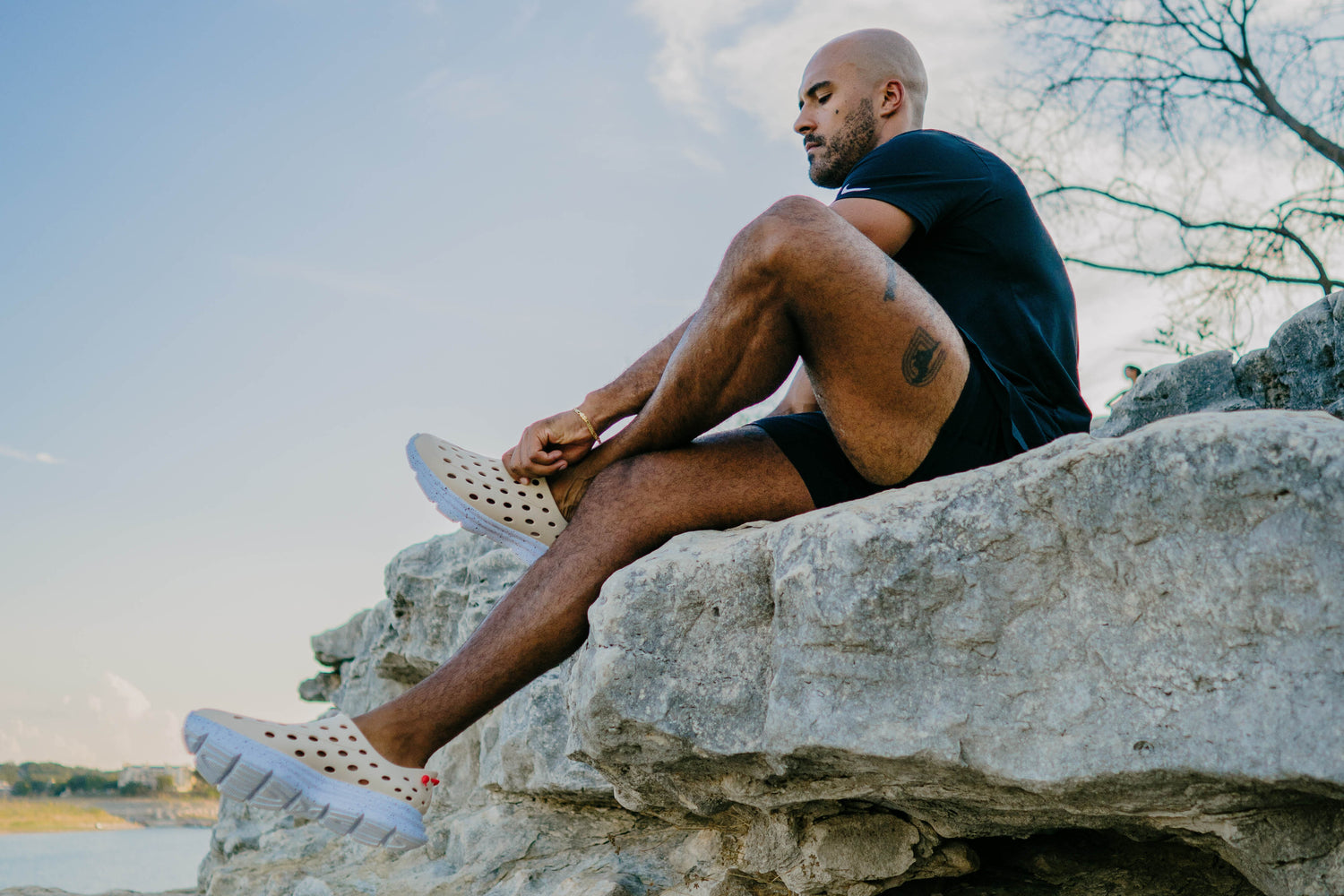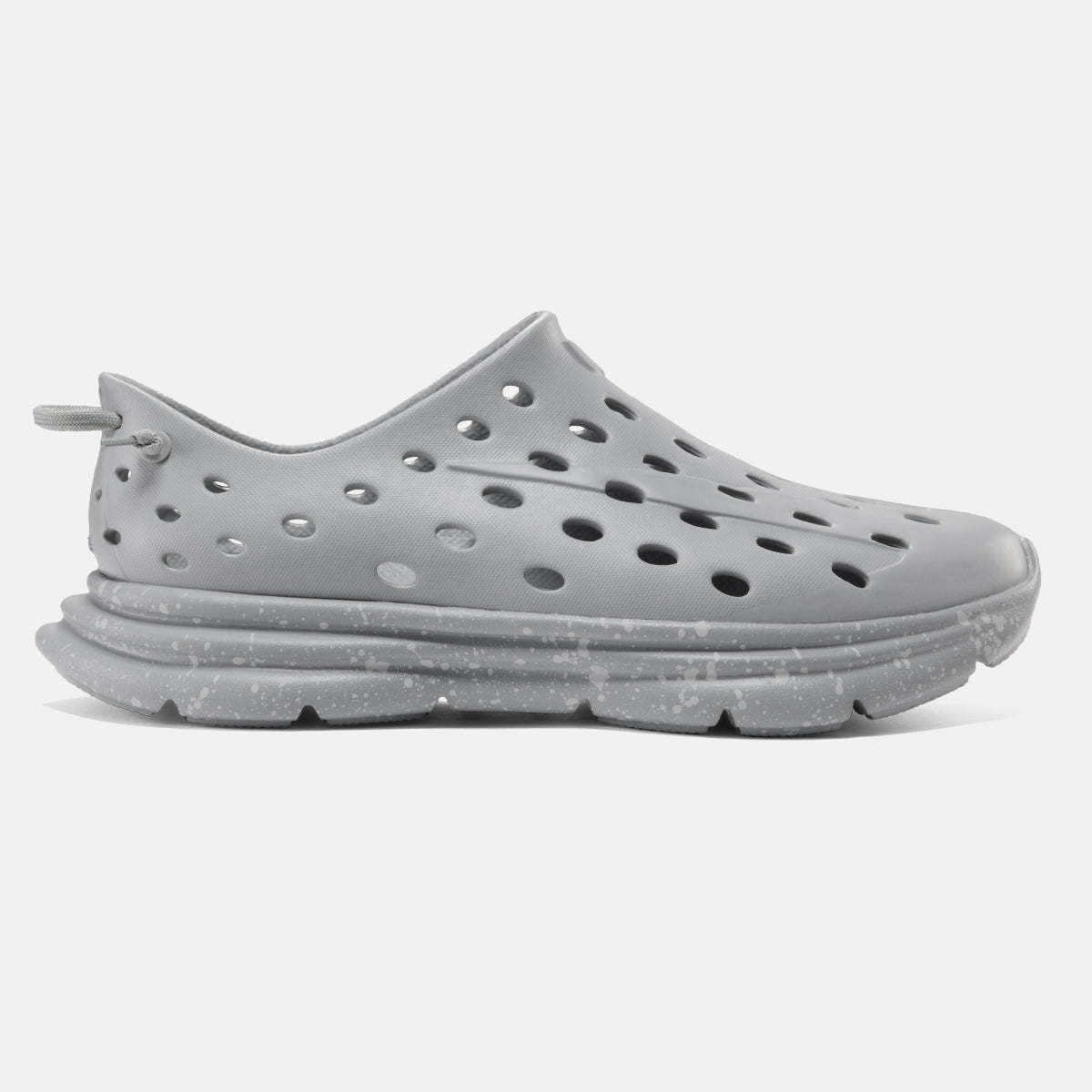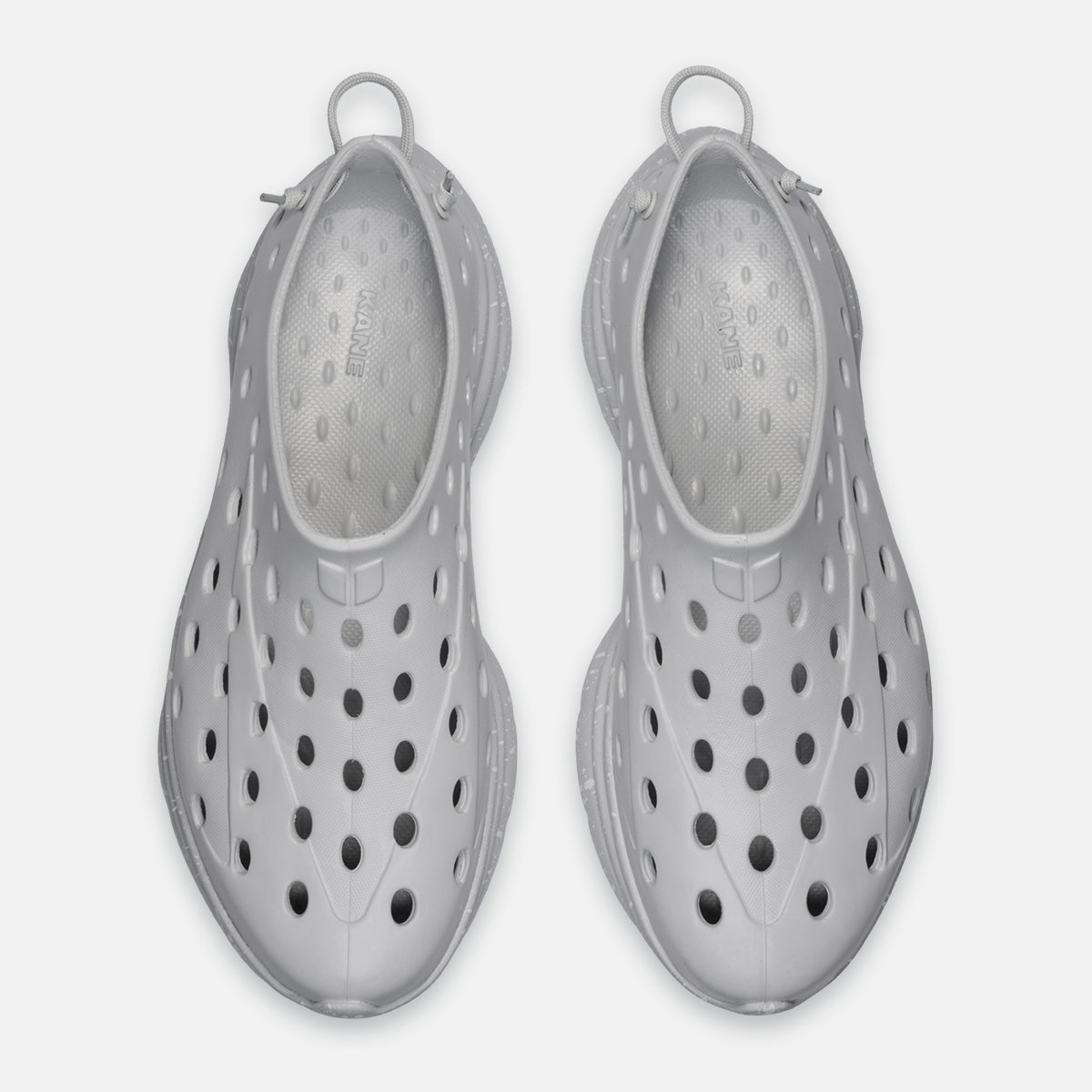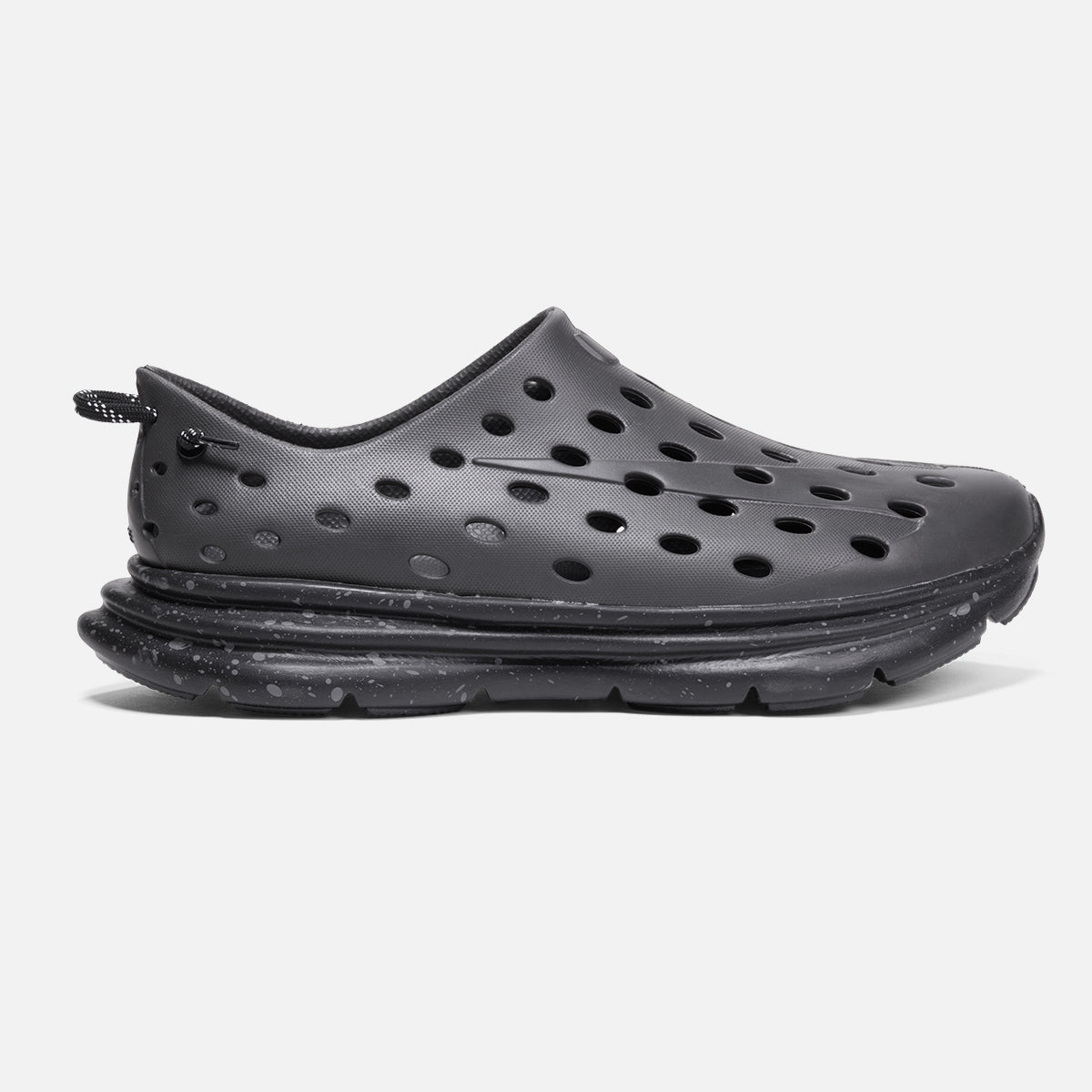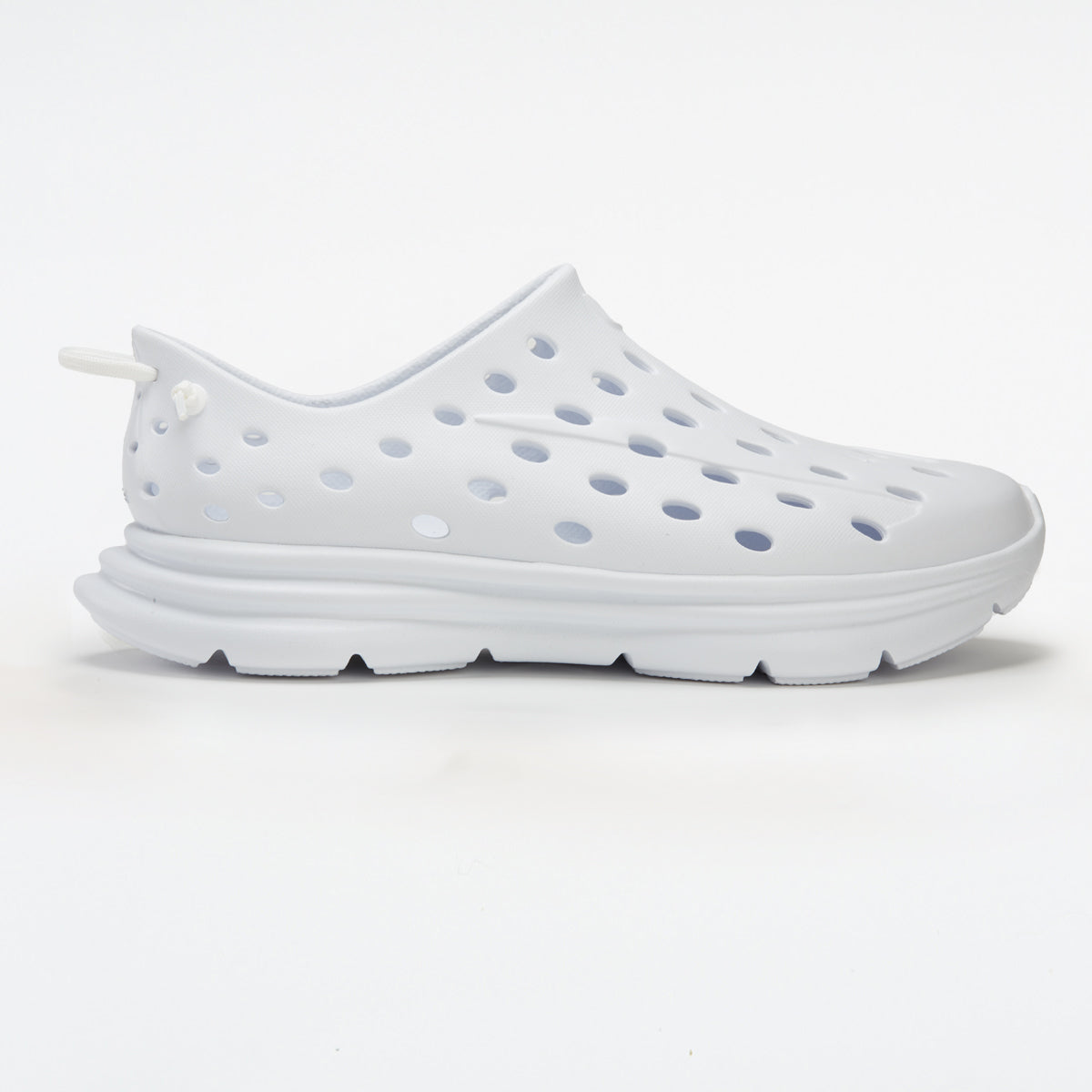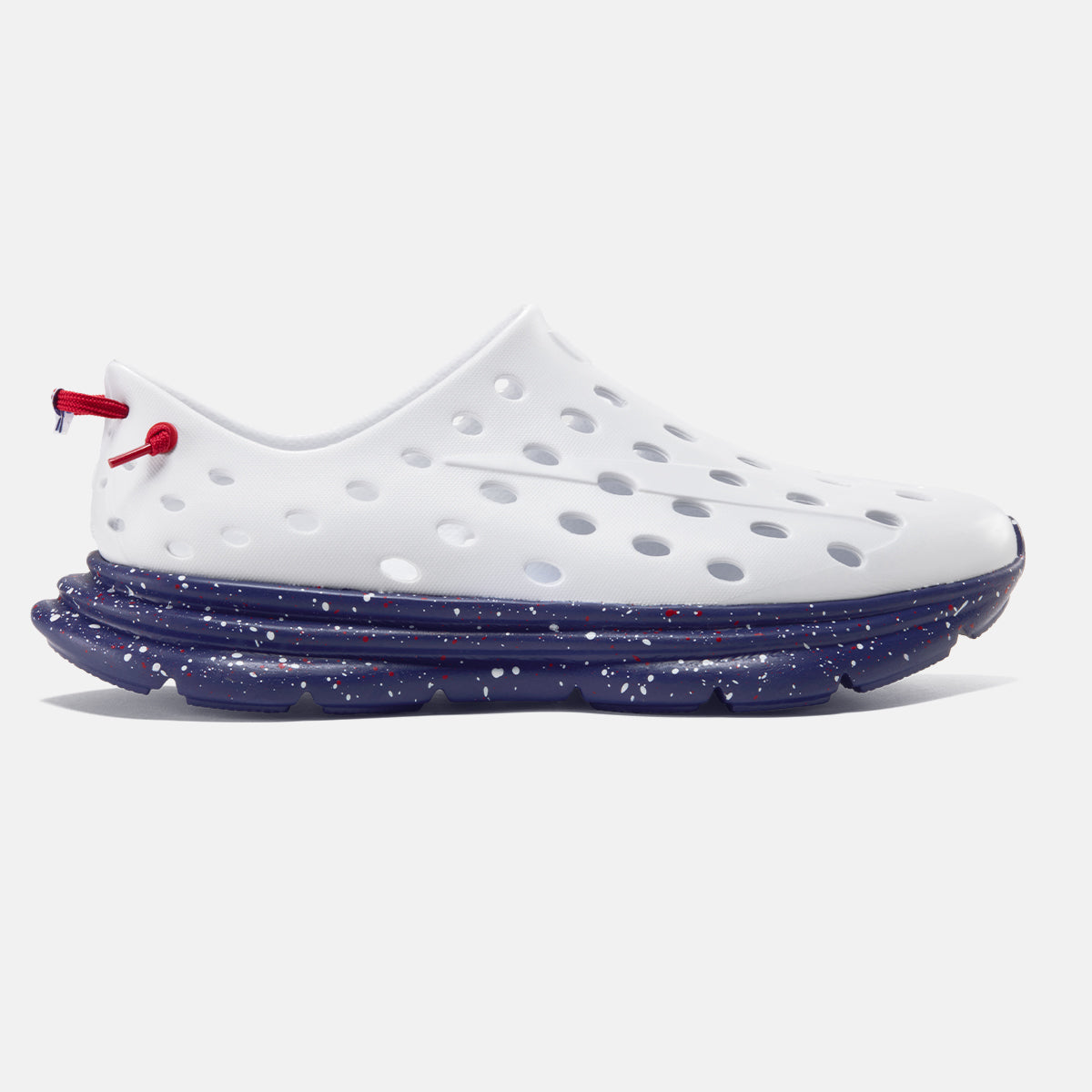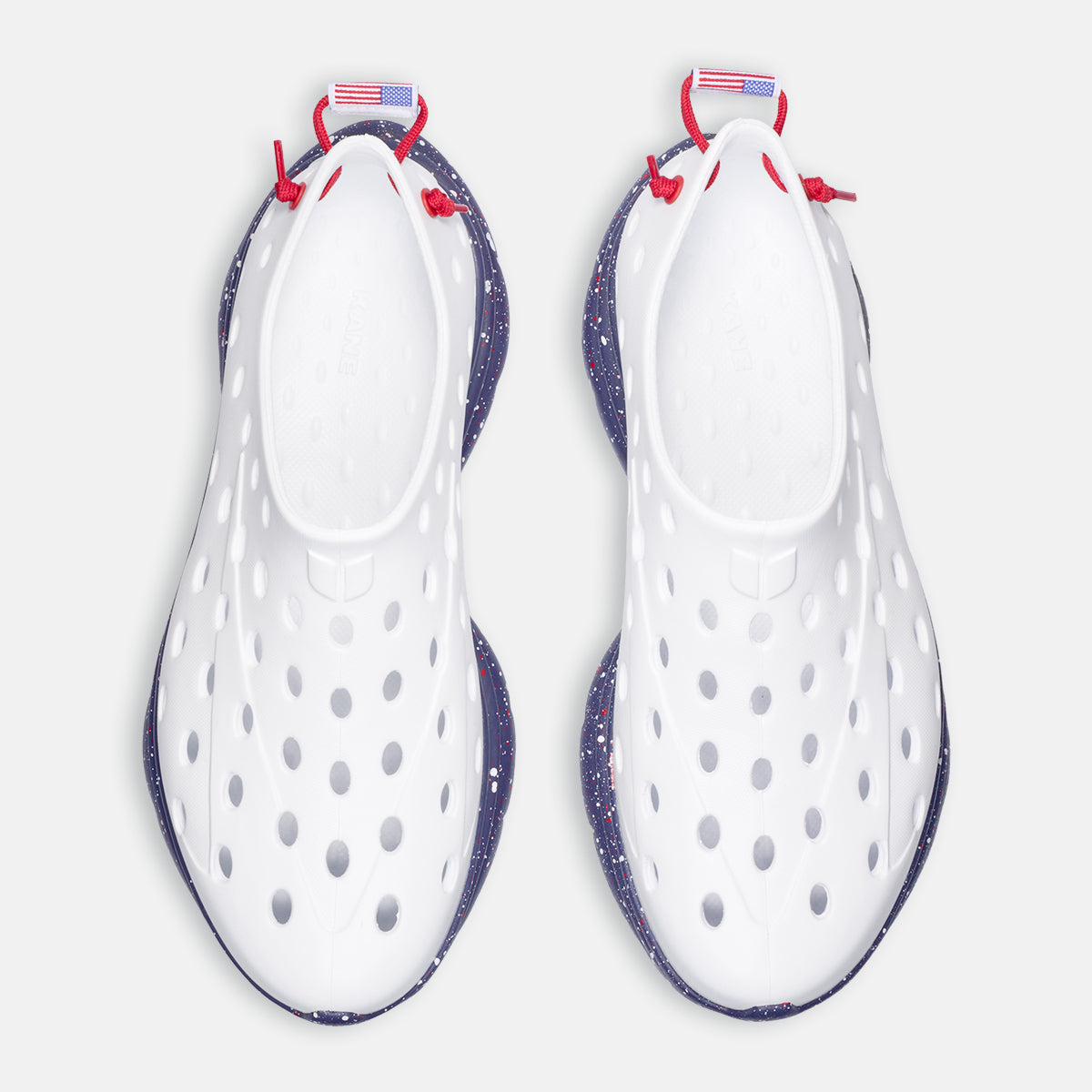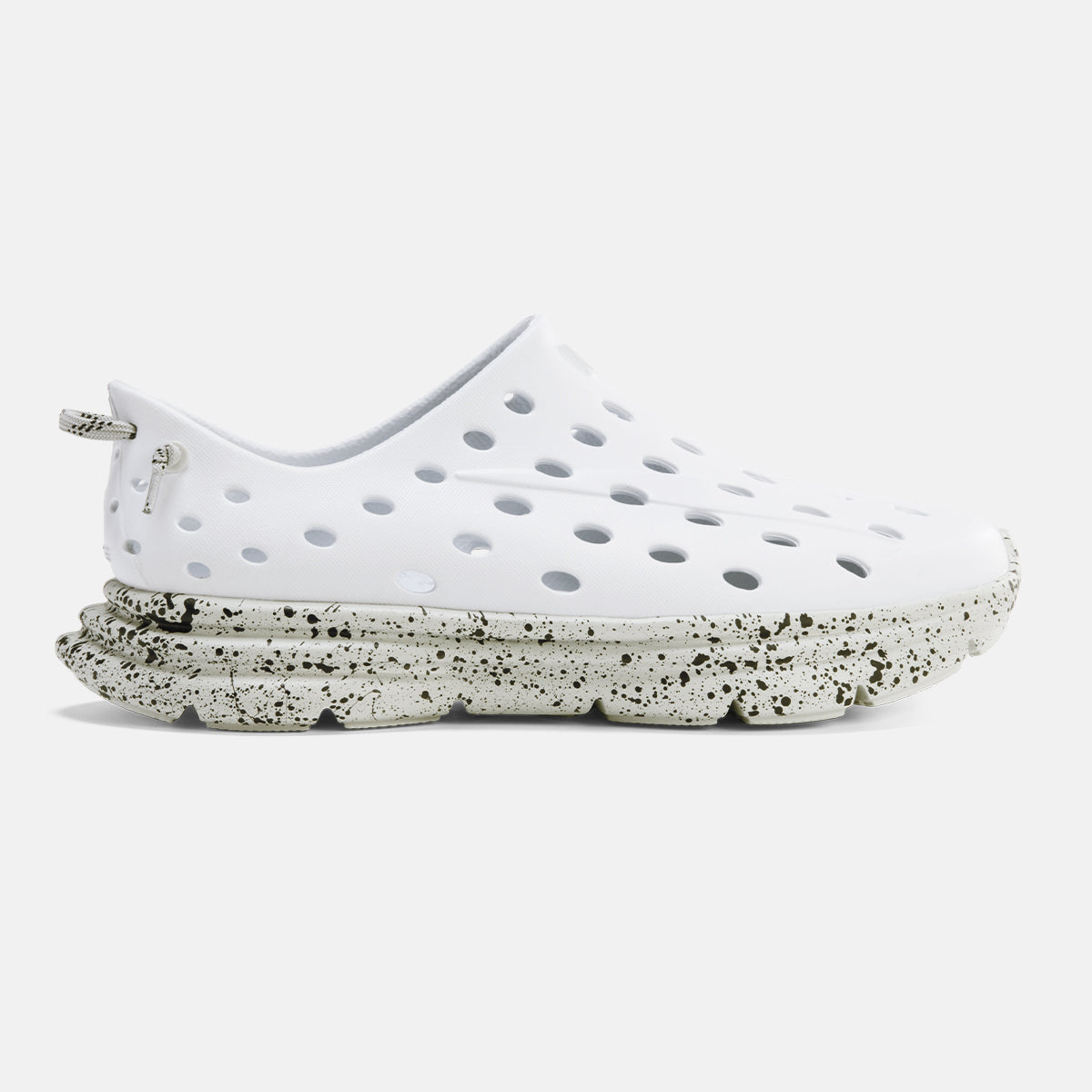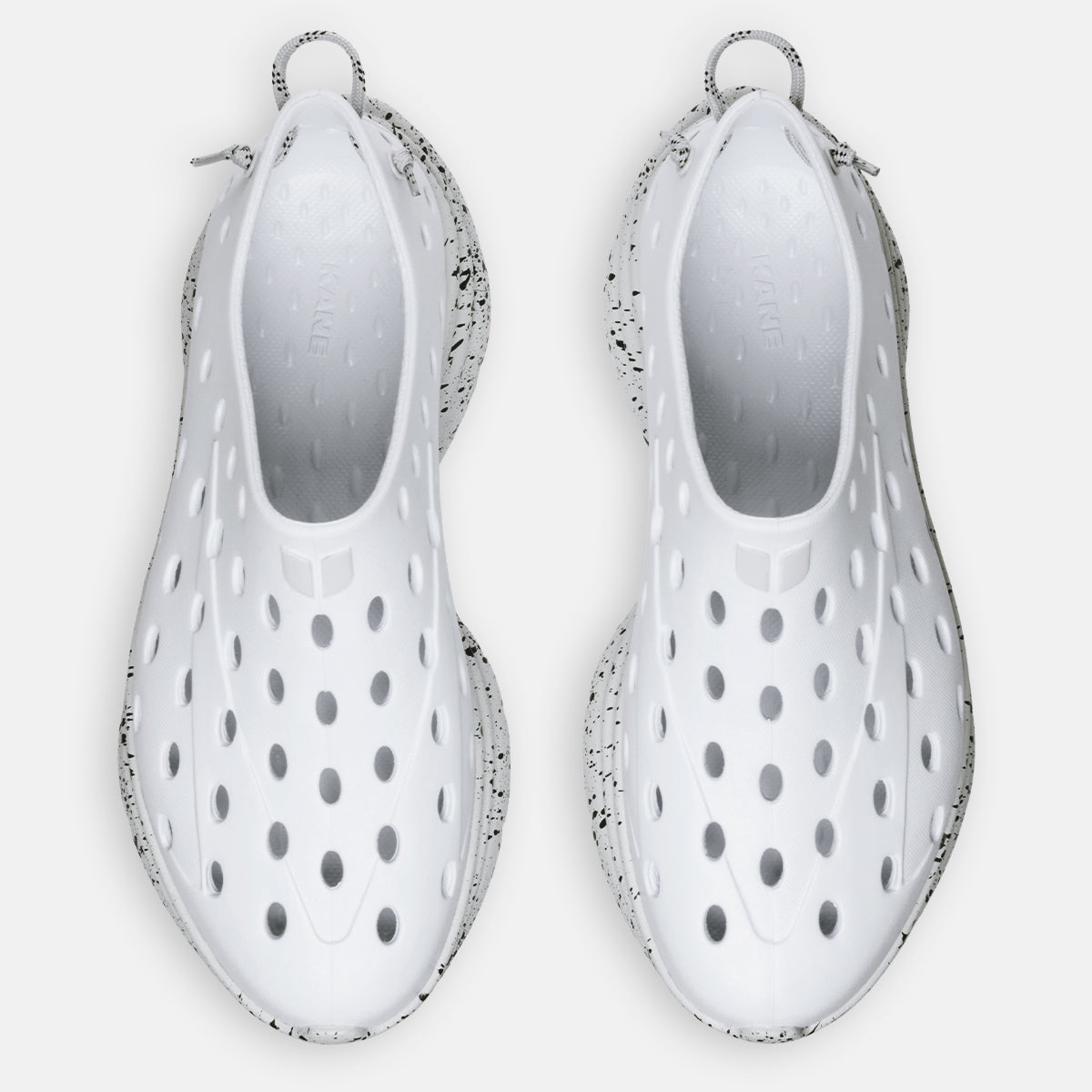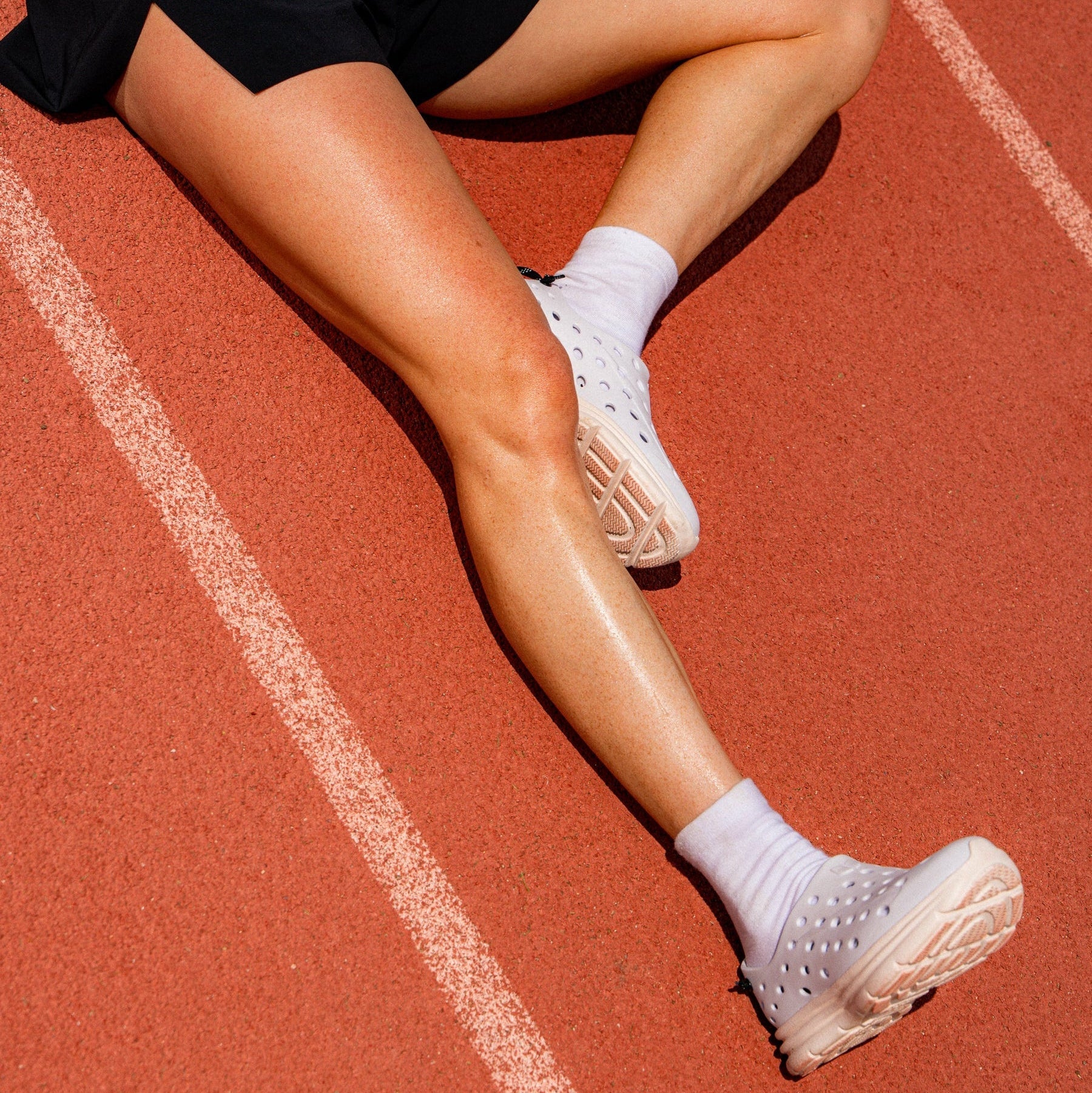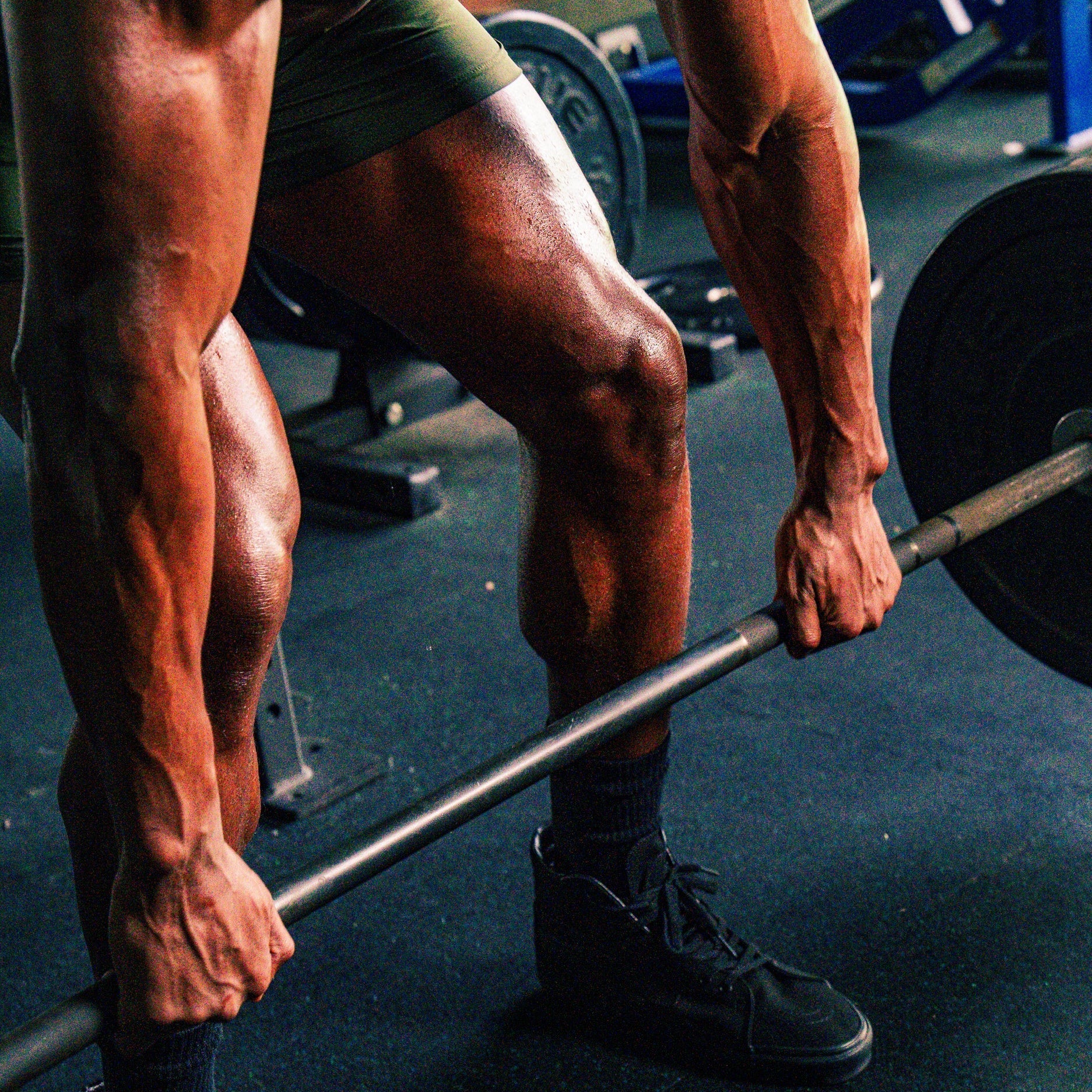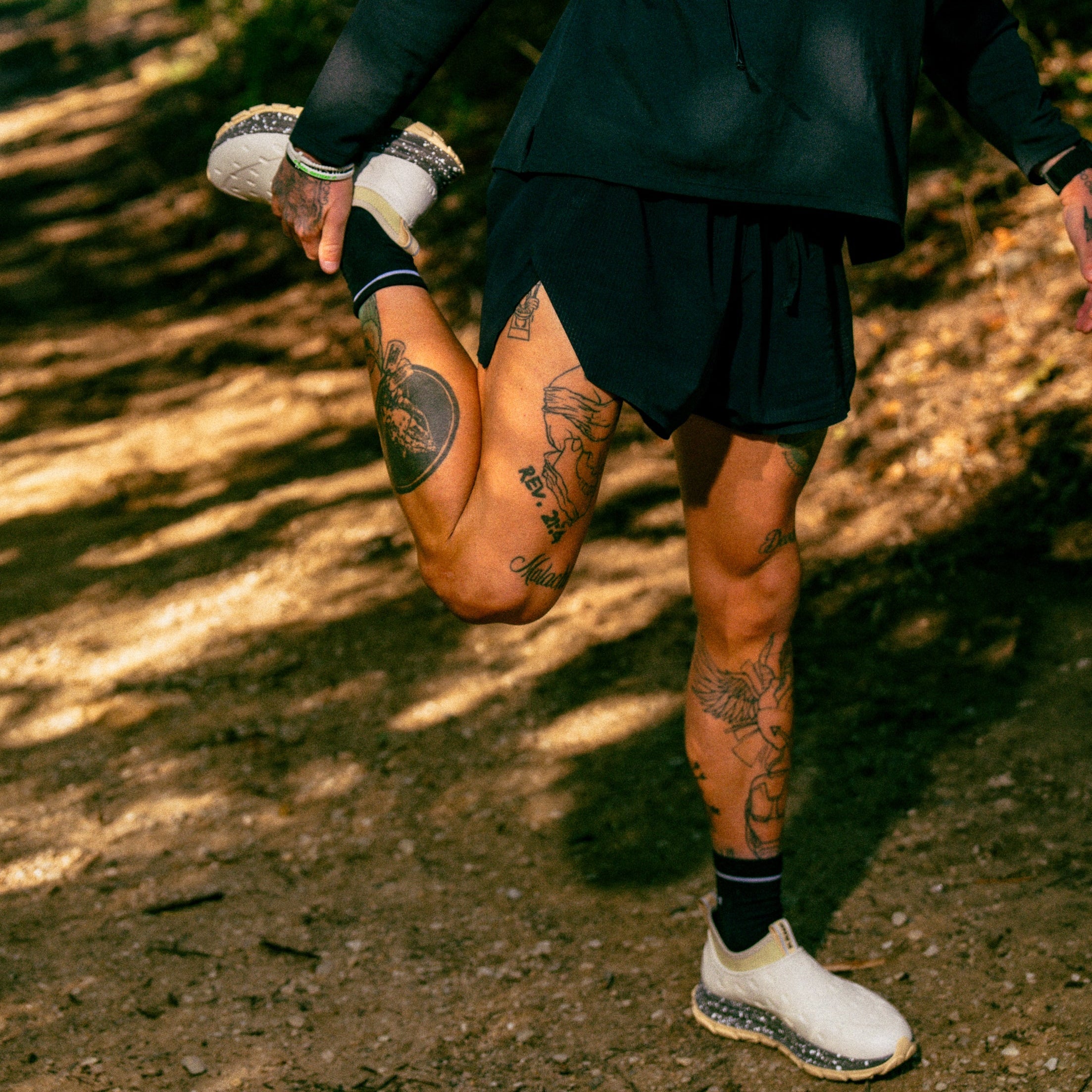Hip pain is another common kind of pain that runners may experience. Like so many running injuries, the causes often boil down to overtraining (pushing too hard, too fast and not taking rest days), and not building strength in the muscles that support running.
As Sports Medicine puts it: “Most running-related injuries affecting the lower extremities are due to preventable training errors, and some may necessitate medical evaluation or a significant reduction in training.”
Many specific issues may cause pain in the hips and it is advisable to see a doctor to understand the source of your pain, rather than self-diagnose the problem. But it always helps to be prepared for that conversation and understand some of the medical terms that may come up, so read on!
Why do you have pain in your hip joint after running?
There are several possible reasons you may experience hip pain after running, including:
Tendonitis / Tendinopathy
According to Sports Medicine “Muscle strains and tendonitis are the most common aetiologies of hip pain and typically result from sudden acceleration/deceleration maneuvers, direction changes or eccentric contractions.”
Tendons are thick cords of tissue that attach muscles to bones, and when they become inflamed or irritated, they can cause pain and discomfort. In the hip area, common types of tendonitis or tendinopathy that can cause pain include:
- Gluteus medius tendinopathy: The gluteus medius muscle is responsible for stabilizing the hip joint during running. Overuse or strain of this muscle can cause the tendon to become inflamed, leading to hip pain.
- Hamstring tendonitis: The hamstring muscles are located in the back of the thigh and are used extensively during running. Overuse or strain of these muscles can cause the tendons that attach them to the hip bone to become inflamed, leading to hip pain after running.
- Iliopsoas tendinopathy: The iliopsoas muscle is located deep in the front of the hip and is responsible for lifting the leg. Overuse or strain of this muscle can cause the tendon to become inflamed, leading to hip pain.
You may wonder about the difference between tendonitis and tendinopathy: They are related but distinct conditions that involve the inflammation and/or degeneration of tendons in the body.
- Tendonitis is a term used to describe inflammation of a tendon. It is typically caused by overuse or repetitive strain, and it can be acute (short-term) or chronic (long-term). Symptoms of tendonitis include pain, tenderness, swelling, and stiffness in the affected area. Treatment for tendonitis typically involves rest, ice, compression, and elevation (RICE), as well as physical therapy and anti-inflammatory medications.
- Tendinopathy on the other hand, is a broader term that encompasses both inflammation and degeneration of a tendon. Unlike tendonitis, tendinopathy does not necessarily involve inflammation and may instead involve degenerative changes to the tendon tissue itself.
Muscle strain
Muscle strain is a common cause of hip pain in runners. Strains can occur when the muscles around the hip joint are stretched or torn due to overuse, sudden movements, or insufficient warm-up. The hip flexors, adductors, and abductors are among the muscles that can be strained during running.
When a muscle is strained, it can cause pain, weakness, and stiffness in the affected area. In the case of hip muscle strains, runners may experience pain in the groin or outer hip area, as well as difficulty moving their legs or performing running-related activities.
Muscle strains can be classified into three grades, depending on their severity:
- Grade 1: Mild strains that involve stretching of the muscle fibers without tearing.
- Grade 2: Moderate strains that involve partial tearing of the muscle fibers.
- Grade 3: Severe strains that involve complete tearing of the muscle fibers.
Treatment for muscle strains may include rest, ice, compression, and elevation (RICE), as well as over-the-counter pain relievers such as acetaminophen or NSAIDs. Physical therapy may also be recommended to help strengthen the affected muscles and improve flexibility and range of motion.
Hip flexor strain
A hip flexor strain is a common injury that can occur in the muscles and tendons of the hip flexors, which are a group of muscles that allow you to lift your legs and move your hips. These muscles are particularly important for runners, as they are involved in every stride — so any weakness or injury in this area can affect your performance.
Hip flexor strains are typically caused by overuse, sudden movements, or a lack of flexibility in the hip flexor muscles. Common risk factors for hip flexor strains in runners include:
- Training errors, such as sudden increases in training volume or intensity
- Running on uneven or unstable surfaces
- Wearing inappropriate or worn-out footwear
- Poor running form or technique, such as overstriding or landing with a heel strike
Symptoms of a hip flexor strain may include pain and tenderness in the front of the hip, especially when lifting the leg or bending at the hip. There may also be stiffness, weakness, or a feeling of tightness in the hip flexor muscles.
Treatment for hip flexor strains typically involves rest, ice, compression, and elevation (RICE) to reduce pain and inflammation. It is also important to avoid activities that exacerbate the pain and to gradually reintroduce exercise and stretching as the injury heals. Physical therapy and other interventions such as massage, heat therapy, or dry needling may also be beneficial in promoting healing and reducing pain.
Bursitis
Bursitis is a condition that occurs when small fluid-filled sacs called bursae, which cushion and lubricate joints, become inflamed. In the hip, the bursae that are most commonly affected are the trochanteric bursae, which are located on the outside of the hip joint. When these bursae become inflamed, it can cause hip pain, especially in runners.
Hip bursitis is most often caused by overuse or repetitive movements, which can irritate and inflame the bursae. Runners are particularly at risk for hip bursitis because of the repetitive nature of running, which can put stress on the hip joint and surrounding tissues. Other risk factors for hip bursitis in runners include:
- Running on uneven or sloped surfaces
- Wearing inappropriate footwear
- Running long distances without proper conditioning or rest
Symptoms of hip bursitis may include pain and tenderness on the outside of your hip, especially when lying on the affected side or after prolonged periods of sitting or standing. The pain may be accompanied by stiffness, swelling, or redness in the hip area.
Treatment for hip bursitis typically involves rest, ice, compression, and elevation (RICE) to reduce pain and inflammation. Non-steroidal anti-inflammatory drugs (NSAIDs) may also be prescribed to help reduce pain and inflammation. Physical therapy and exercises to strengthen the hip muscles may also be recommended to help improve mobility and prevent future flare-ups.
Labral tear
A labral tear involves damage to the labrum, a piece of cartilage that lines the rim of the hip socket. The labrum helps to cushion and stabilize the hip joint, and it can become torn or damaged due to repetitive stress, like running, or trauma.
Symptoms of labral tears include pain and aching in the hip joint, especially during and after running. The pain may be accompanied by clicking, catching, or locking sensations in the hip, as well as stiffness or limited motion range in the hip joint.
Treatment for a labral tear often involves rest, ice, compression, and elevation (RICE) to reduce pain and inflammation. Non-steroidal anti-inflammatory drugs (NSAIDs) may also be prescribed to help reduce pain and inflammation. Physical therapy and exercises to strengthen the hip muscles and improve range of motion may also be recommended to help improve mobility and prevent future flare-ups.
Iliotibial band syndrome (ITBS)
Iliotibial band syndrome (ITBS) affects many runners. ITBS involves inflammation and irritation of the iliotibial band — a thick band of tissue that runs along the outside of the thigh, from the hip to the knee. When the iliotibial band becomes tight or inflamed, it can cause pain in the hip, knee, or both. In runners, ITBS is typically caused by repetitive movements.
Symptoms of ITBS can include pain or discomfort on the outside of your hip or knee, especially during or after running. Whether it's a dull or sharp pain, it may worsen with continued activity. Some runners may also experience swelling or tenderness in the affected area.
Treatment for ITBS typically involves rest, ice, compression, and elevation (RICE therapy) to reduce pain and inflammation. Non-steroidal anti-inflammatory drugs (NSAIDs) may also be prescribed. Physical therapy and exercises to stretch and strengthen the iliotibial band and surrounding muscles may also be recommended to help improve mobility and prevent future flare-ups.
Osteoarthritis (OA)
Osteoarthritis is a type of joint disease that occurs when the cartilage that cushions the joints breaks down over time. Ultimately it will lead to bones rubbing against each other. Osteoarthritis can cause pain, stiffness, and swelling in the affected joint, which can worsen over time.
While osteoarthritis can occur in any joint in the body, it is particularly common in weight-bearing joints such as the hips, causing hip injury.
In runners, osteoarthritis of the hip can be caused by several factors, including:
- Repetitive stress on the hip joint from running
- Previous injuries to the hip, such as fractures or dislocations
- Abnormalities in the hip joint structure or alignment
- Age-related wear and tear of the hip joint
Symptoms of osteoarthritis in the hip may include pain and stiffness, particularly during or after running. Runners with hip osteoarthritis may also experience a decreased range of motion in the hip joint, as well as swelling or tenderness around the hip joint.
Treatment for hip osteoarthritis in runners typically involves a combination of non-surgical and surgical interventions. Non-surgical treatments may include:
- RICE therapy
- Nonsteroidal anti-inflammatory drugs (NSAIDs)
- Physical therapy
In more severe cases of hip osteoarthritis, surgical interventions such as hip replacement surgery may be necessary to repair or replace damaged portions of the hip joint.
Stress fractures
Stress fractures are small cracks or breaks in the bone that develop due to repetitive stress on the bone over time. Hip stress fractures can cause hip pain in runners because the hip joint is a weight-bearing joint and experiences significant forces during running.
Runners who are at particular risk for hip stress fractures include those who:
- Engage in high-intensity running
- Run on hard surfaces
- Have poor bone density
- Have previously experienced stress fractures or other bone injuries
The pain of a stress fracture may be sharp and intense and may worsen over time. Runners with hip stress fractures may also experience tenderness or swelling around the affected area, and a decreased range of motion in the hip joint.
Treatment for hip stress fractures normally involves rest and immobilization of the affected hip joint to allow the bone to heal. This can involve using crutches/assistive devices to take weight off the affected hip joint. Physical therapy and exercises to improve hip strength and flexibility may also be recommended to prevent future injuries.
8 ways to reduce hip pain from running
We have touched on some treatments for hip soreness after running through the above explanations. Of course, the specific course of treatment will vary depending on the cause. If your hips hurt, do defer to your healthcare provider and work in consultation with them and/or your physical therapist as they will review your case with your full medical history in mind.
However, there are some common options to prevent hip pain and for treating hip pain after running:
1. Take a rest day
Running too much or too frequently without proper rest and recovery can cause overuse injuries to many parts of the body, including the hips. So adequate recovery time (also known as rest days) is key. Here’s how they help:
- Recovery: Rest days allow your body to recover by repairing damaged tissues and building new muscle fibers. This helps to prevent injury.
- Injury prevention: Overuse injuries such as stress fractures, tendinitis, and muscle strains are common among runners. Rest days can help to prevent these injuries by giving the body time to heal and recover.
- Mental health: Let's not forget the mind/body connection. Rest days can also be beneficial for mental health by providing a break from the physical and mental demands of running.
- Performance improvement: When the body is given time to recover, runners can often perform better and see improvements in their speed and endurance.
Even on rest days, you can engage in active recovery, such as stretching, foam rolling, or low-impact exercises like swimming.
On rest days, try Kane Recovery Shoes
The Kane Revive shoe provides superior support coupled with precise biomechanics. The proprietary blend of EVA, a 10mm heel raise, and arch support ensure an easy transfer from heel to toe, allowing foot and leg muscles to recover. Check them out here.
2. Use RICE therapy
RICE therapy is always a good default step for treating heel pain. The acronym breaks down as follows:
- Rest: Rest is important for allowing the injured area to heal properly and to immediately relieve pain. This means taking a break from activities that aggravate the injury (see aforementioned rest days) and avoiding putting weight or pressure on the affected area.
- Ice: Applying an ice pack to the affected area can help reduce pain, swelling, and inflammation. Ice should be applied for 20-30 minutes at a time, several times a day, and should be wrapped in a towel or cloth to prevent direct skin contact.
- Compression: Wrapping the affected area in a compression bandage or brace can help reduce swelling and provide support for the injured tissue. Compression should be firm but not too tight and should be adjusted as needed to ensure comfort and proper circulation.
- Elevation: Elevating the affected area above the level of the heart can help reduce swelling and promote drainage of fluids from the injury. This can be done by propping up the affected limb with pillows or cushions.
3. Take over-the-counter painkillers
It is always important to consult with a healthcare professional before taking any medication, even over-the-counter painkillers.
That said, the most commonly used over-the-counter painkillers for hip pain include nonsteroidal anti-inflammatory drugs (NSAIDs) such as ibuprofen (Advil, Motrin) or naproxen (Aleve). These medications can help to reduce pain and inflammation in the affected area. Acetaminophen (Tylenol) may also be used to relieve pain, although it does not have anti-inflammatory properties.
If hip pain persists or worsens despite the use of over-the-counter painkillers, it is important to seek medical attention to determine the underlying cause of the pain and to receive appropriate treatment.
4. Warm-up before & cool down after running
Warming up with stretching exercises before running helps prepare the body for exercise by gradually increasing heart rate, blood flow, and body temperature. This helps reduce the risk of injury and improves performance by priming the muscles and joints for activity.
Cooling down after running helps the body gradually return to its resting state by lowering heart rate and blood pressure, and preventing blood from pooling in the legs. Gentle stretching exercises help reduce the risk of injury and stiffness and promote recovery.
5. Don’t overtrain
Runners tend to push through the pain and often have aggressive distance and speed goals. We get it: It can be hard to compromise on those goals. But listening to your body is also key. Whether your goal is to run a 5k or a marathon, work your way there gradually. Slowly and steadily increase the intensity and volume of running. This helps prevent overuse injuries and reduces the risk of hip injuries or pain.
7. See a physical therapist
If you're a committed runner, having a physical therapist can be a huge boon to your training regimen. Physical therapists can assess your gait and overall movement patterns and perform tests to identify any issues that could be causing hip pain. Based on their assessment and diagnosis, they'll develop a customized strength training and treatment plan that will help you get the correct running form.
8. Train your hip abductors
Training your hip abductors refers to strengthening the muscles that are responsible for moving your leg away from your body, or out to the side. These muscles include the gluteus medius and minimus, which are located on the side of your hip.
Training your hip abductors can help to improve hip stability and reduce the risk of injuries such as IT band syndrome or runner's knee, which can be caused by weakness or imbalances in the hip muscles.
It is advisable to work with a physical therapist to develop a training program. Some of the exercises that can help to strengthen your hip abductor muscles include:
- Side-lying leg lifts
- Clamshells
- Monster walks
- Single-leg squats
When training your hip abductors, it is important to start with light weights or resistance bands and gradually increase the intensity and difficulty of the exercises over time. It is also important to maintain proper form and technique to avoid injury and maximize the effectiveness of the exercises.
When to see a doctor about hip injuries
In general, we recommend seeing a doctor if you’re experiencing severe, prolonged, or recurring pain in any body part. Don’t just expect things can go away on their own.
To be specific: As a runner, you should see a doctor about hip pain if:
- The pain does not go away with rest
- The pain is affecting your running
- The pain is getting worse
- The pain is accompanied by swelling or stiffness
- You have a history of hip injuries or conditions
A doctor can perform a physical examination, order imaging tests if necessary, and provide a diagnosis and treatment plan to help you manage your hip pain and continue running safely.



































